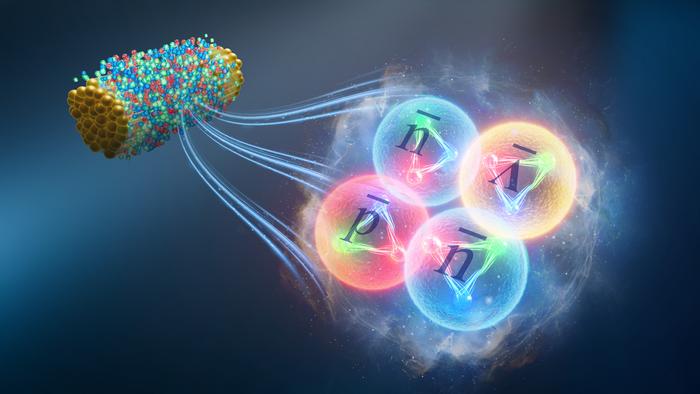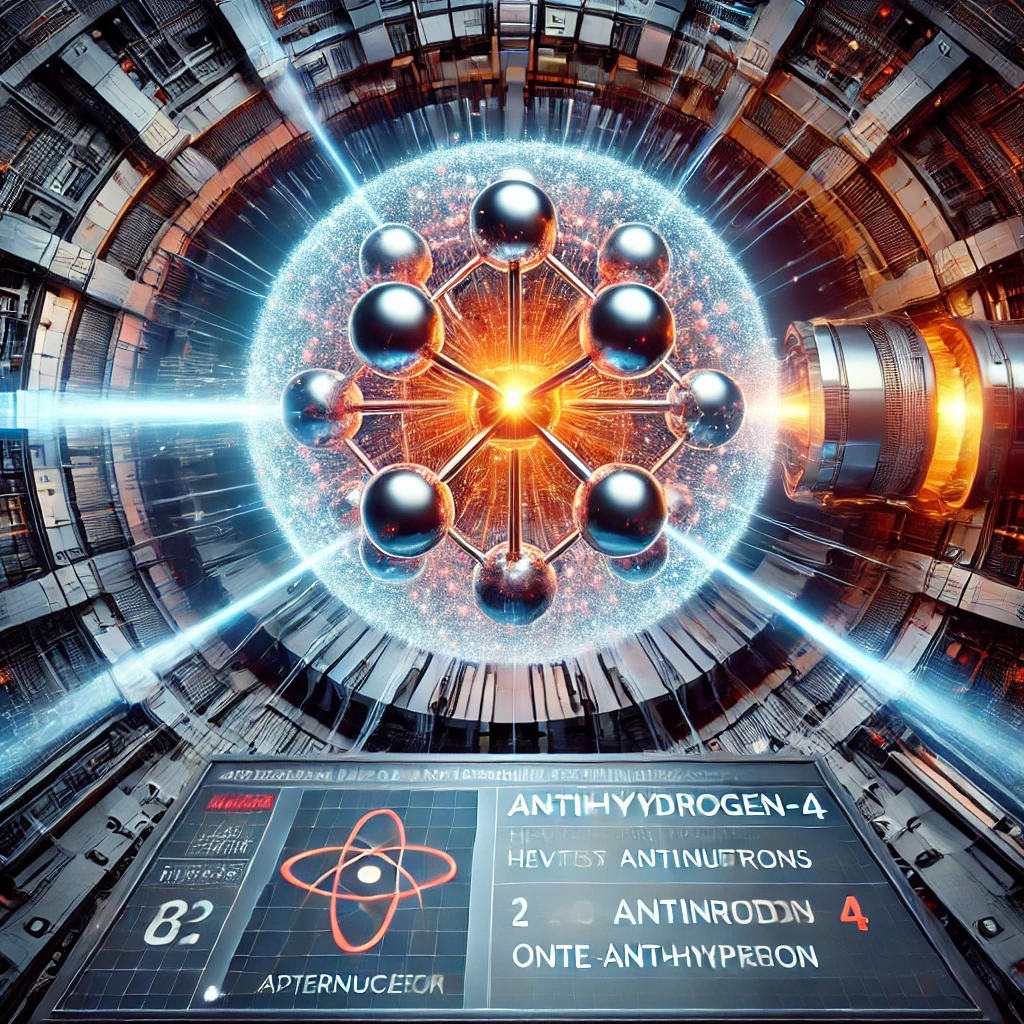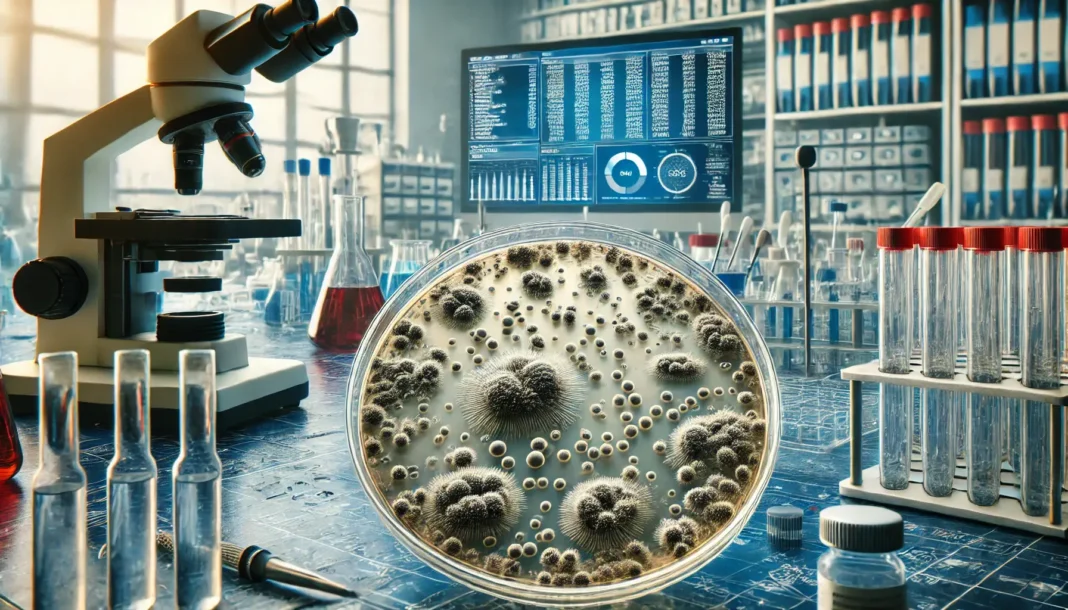Physicists Discover the Heaviest Antimatter Hypernucleus to Date
Physicists from the STAR Collaboration have made a groundbreaking discovery by observing a new antimatter hypernucleus, antihyperhydrogen-4. This discovery is significant as it represents the heaviest antimatter hypernucleus ever detected in experimental research. This remarkable achievement was led by researchers from the Institute of Modern Physics (IMP) of the Chinese Academy of Sciences and was recently published in Nature on August 21st.
The discovery of the heaviest antimatter hypernucleus, antihyperhydrogen-4, pushes the boundaries of our understanding of antimatter and its properties. Current physics theories operate on the assumption that the properties of matter and antimatter are symmetrical. Furthermore, these theories suggest that equal amounts of matter and antimatter were present at the birth of the universe. However, due to an unknown physical mechanism, almost all matter and antimatter were annihilated, with only about one in ten billion matter particles surviving. These surviving particles are what make up the matter that forms our universe today.

The Quest to Understand Matter-Antimatter Asymmetry
One of the greatest mysteries in physics is understanding what caused the disparity between the quantities of matter and antimatter in the universe. According to Prof. Qiu Hao from IMP, an important method for investigating this mystery is by creating new antimatter in the laboratory and studying its properties. The discovery of the heaviest antimatter hypernucleus is a step forward in this quest, providing new insights into matter-antimatter symmetry.
In today’s universe, which is dominated by matter, antimatter is exceedingly rare because it readily annihilates upon contact with matter. Antimatter nuclei and antimatter hypernuclei—nuclei that contain hyperons such as Lambda—are even more challenging to produce due to the difficulty of combining several antibaryons. Since the Dirac equation predicted the existence of antimatter in 1928, scientists have only identified six types of antimatter (hyper)nuclei over nearly a century of research.
The Discovery of Antihyperhydrogen-4
The newly discovered antihyperhydrogen-4 was produced at the Relativistic Heavy Ion Collider (RHIC) in the United States. RHIC has the capability to accelerate heavy ion beams to nearly the speed of light, causing them to collide with immense energy. These collisions simulate the extreme conditions of the early universe, creating fireballs with temperatures reaching several trillion degrees. These fireballs contain approximately equal amounts of matter and antimatter. As the fireball rapidly expands and cools, some antimatter particles manage to escape annihilation with matter, allowing them to be detected by the STAR detector.
Antihyperhydrogen-4, the heaviest antimatter hypernucleus discovered to date, consists of one antiproton, two antineutrons, and one anti-Lambda hyperon. Due to the presence of the unstable anti-Lambda hyperon, antihyperhydrogen-4 has a very short lifespan, decaying after traveling only a few centimeters.
Reconstructing Antihyperhydrogen-4
After analyzing experimental data from approximately 6.6 billion heavy-ion collision events, the research team successfully reconstructed antihyperhydrogen-4 from its decay products: antihelium-4 and π+ meson. According to Wu Junlin, a PhD student at IMP, the team identified a signal corresponding to about 16 antihyperhydrogen-4 particles, confirming their existence.
Furthermore, the researchers measured the lifetime of antihyperhydrogen-4 and found that it closely matched the lifetime of its corresponding matter particle, hyperhydrogen-4, within the limits of measurement precision. This finding reinforces the theory of symmetry between matter and antimatter properties.
Advancing Our Understanding of Antimatter
The discovery and subsequent study of antihyperhydrogen-4 represent a significant advancement in the field of antimatter research. By exploring the properties of this heaviest antimatter hypernucleus, scientists can gain deeper insights into the symmetry between matter and antimatter, which could eventually help answer some of the most profound questions about the origins of the universe.
This groundbreaking research not only highlights the progress in our understanding of antimatter but also paves the way for future studies that could reveal even more about the fundamental nature of the cosmos.
Potential Links:
- Institute of Modern Physics (https://www.imp.cas.cn)
- STAR Collaboration (https://www.bnl.gov/starmap/)
- Relativistic Heavy Ion Collider (https://www.bnl.gov/rhic/)











